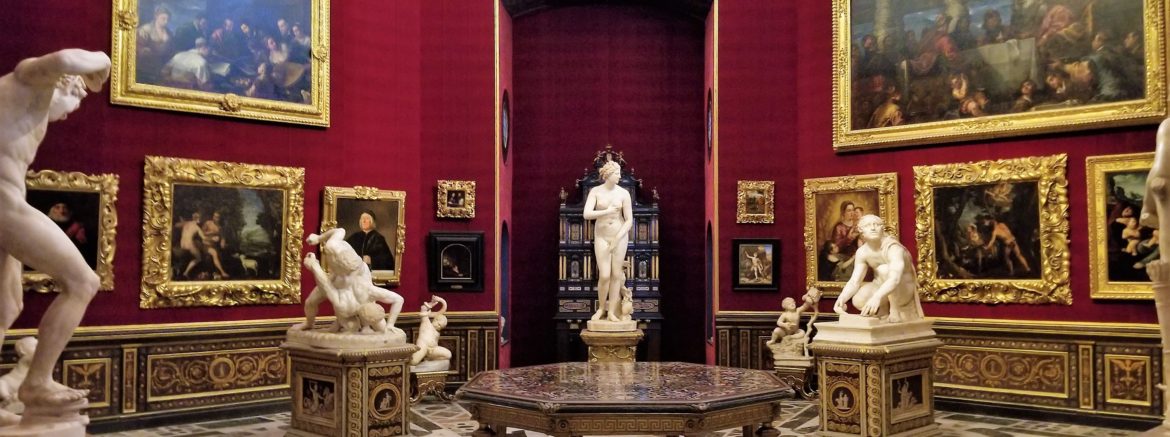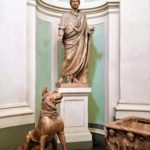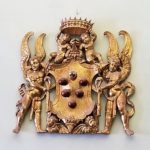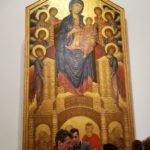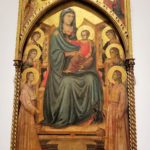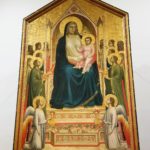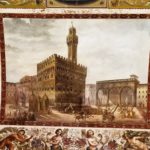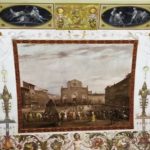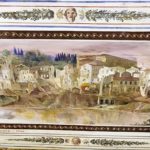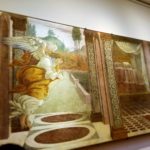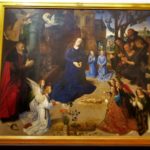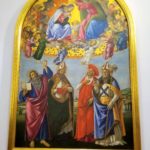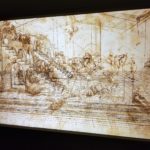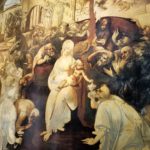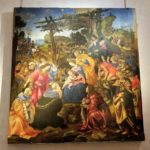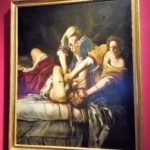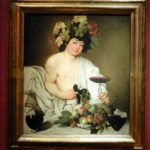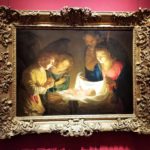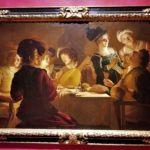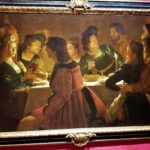Our first Visit to the Uffizi
A few years ago we visited the Uffizi Gallery in Florence while on a Mediterranean Cruise. Our plan included purchasing tickets online and having a car get us as close to the Uffizi as possible. We even prepped for the visit by watching videos and reading books. Our objective was to see the best of the Uffizi in a limited amount of time.
The reality of visiting the very large, very crowded and very warm museum didn’t match our expectations. The Uffizi is big and its sprawling. There are 45 different galleries on three floors and thousands of pieces to look at. Consequently, we left the Uffizi feeling tired, over-heated and rather unfulfilled. Sure, we saw hundreds of paintings, sculptures and frescos but didn’t know the stories behind what we saw. Unfortunately, we went home with some photos of paintings but no appreciation.
What bothered us most was missing some of the best of the Uffizi in our effort to “see everything.” We simply ran out of time and energy. That cruise was our first trip to Europe and at the time we did not know if we would be back.
Adventure of a Lifetime
In 2016 we began planning what we call the Adventure of a Lifetime. We would travel around-the-world visiting more than 35 countries and 75 cities. Our goal is not to simply cross destinations off a bucket list but to have memorable experiences that are meaningful to us.
Discovering The Roman Guy
Rome and Florence were at the top of our list of cities to visit, but we knew little about either and there was a lot of information to absorb. While researching Rome, we stumbled on the neighborhood guides produced by The Roman Guy tour company. Finally! we had found a resource that took the complex city of Rome and made it understandable for us! We devoured the videos and actually chose to rent an apartment in the Monti neighborhood. Our decision was based partly on what we learned from watching The Roman Guy’s descriptive Monti neighborhood guide.
The Roman Guy Tours in Rome
The information in The Roman Guy videos proved so reliable that we booked two Roman Guy tours in Rome. We chose the Colosseum Underground Tour and the *Privileged Entrance* Vatican Tour. We enjoyed both tours and especially appreciated the special access and skip-the-line features.
What does this all have to do with the Uffizi?
In Florence we wanted to see the best of the Uffizi Gallery without exhausting ourselves. The obvious tour choice for us was The Roman Guy.
Florence and Best of the Uffizi
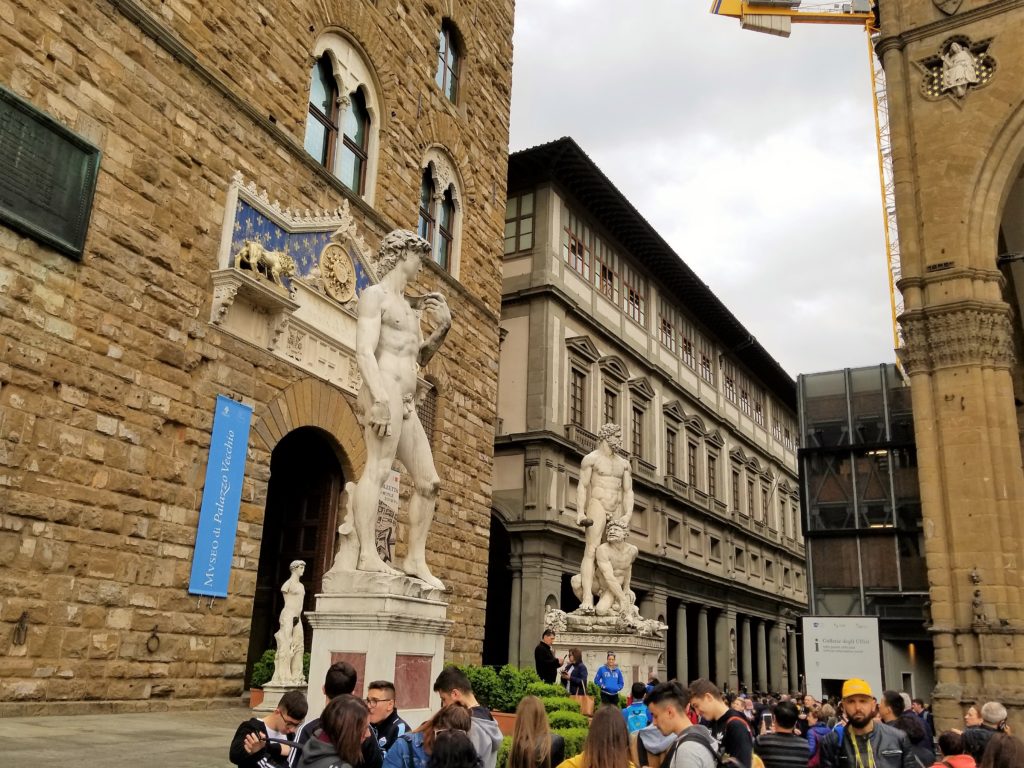
Meeting our Tour Group
Before the tour we received a voucher with clear instructions of where to meet and how to connect with our guide. The voucher even had a picture of exactly where we should stand. This was reassuring and helpful. As we arrived in the Piazza della Signoria, it was a sea of people and chaos.
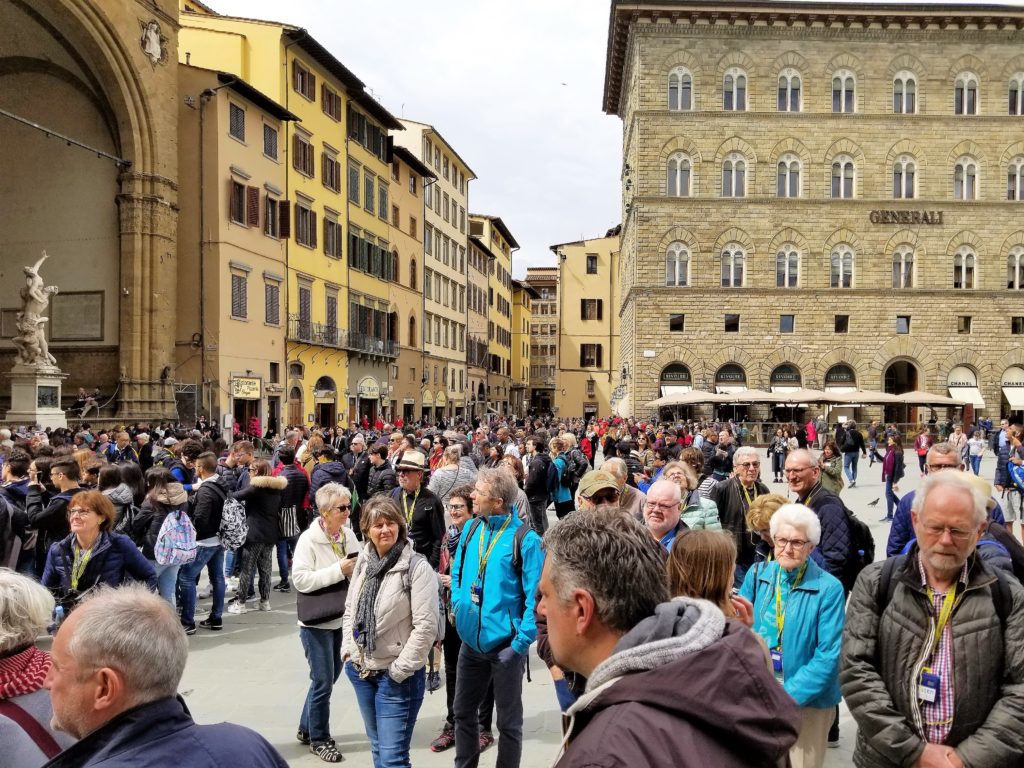 However, we easily found our meeting spot off to the side. A guide was standing exactly at the pictured meeting location holding The Roman Guy sign. We learned this was our guide Caterina. We experienced the same kind of meeting coordination for both our The Roman Guy tours in Rome. The consistency and ease of connecting was immediately reassuring and prevented worries about finding our tour group.
However, we easily found our meeting spot off to the side. A guide was standing exactly at the pictured meeting location holding The Roman Guy sign. We learned this was our guide Caterina. We experienced the same kind of meeting coordination for both our The Roman Guy tours in Rome. The consistency and ease of connecting was immediately reassuring and prevented worries about finding our tour group.
Small Group
We were pleasantly surprised to discover our tour group was small making this almost like a private guide tour. The maximum people for this Uffizi tour is 16. After introductions and some discussion Caterina led us to the entrance. We queued up to go through security and Caterina used the time to give us an overview of the tour. She explained how the tour would flow and what we would do and see. This prepared us for our experience and created a framework for what we would be seeing. Her presentation skills were so engaging that time flew while we waited in the security line.
Entering the Museum
It was a short walk to our beginning point. Caterina explained during our visit that we would see the best of the Uffizi as she took us to the most significant exhibits, artists and masterpieces. We would skip some of the less significant and relevant pieces to ensure we maximized the value of our time and visit. We had the option of remaining in the Uffizi on our own after the tour to see additional art or revisit anything as we chose.
The starting point was a collection of family portraits and sculptures of the Medici family. These laid the foundation for the entire Uffizi experience as the Medici family was responsible for the existence of the Uffizi. They also play key roles in Florence and the renaissance.
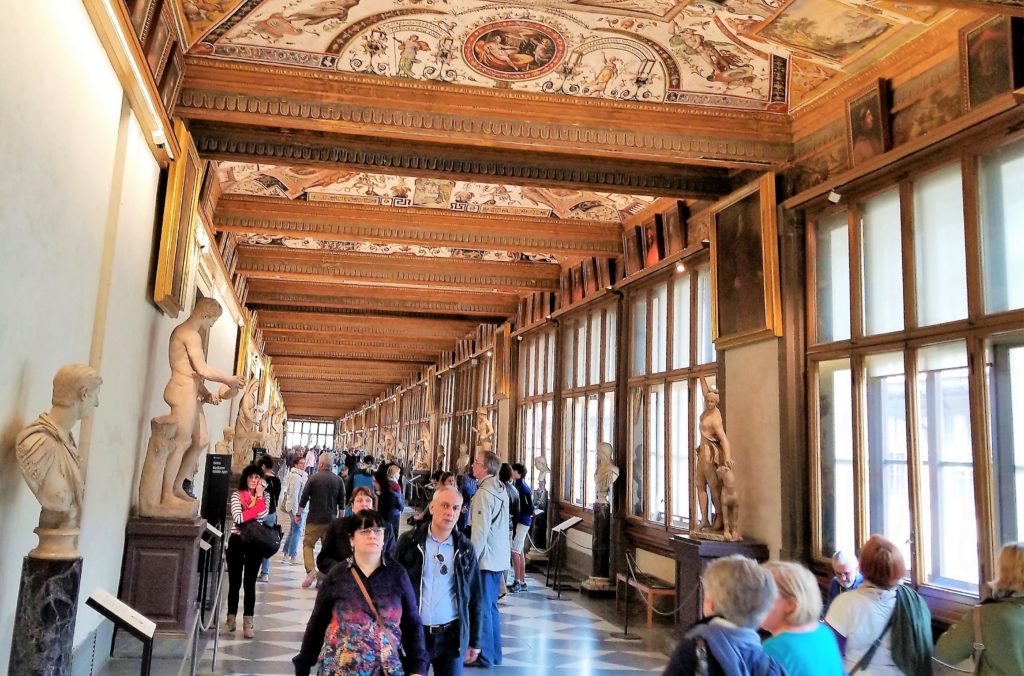
Hall of Sculptures
We were awed by the expanse and beauty of the frescoes. Lining the upper walls were large portraits of the Medici Family, and hundreds of small portraits of significant figures of the period, including popes, political figures and aristocrats. Caterina explained Cosimo di Giovanni de’ Medici dispatched his personal artist to make copies of significant portraits. Most of the original portraits were destroyed by floods or fires and would be lost. So arguably, the collection of copies in the Uffizi really are the originals today.
Entering our first gallery, Caterina explained and contrasted similar paintings of the Madonna from different periods. She explained how the earlier painting lacked depth and was more two-dimensional. Then Caterina pointed out the improvements made in a later painting where techniques for creating depth and perspective were employed. You’ll notice in the first example, the infant looks as if it could slide off the portrait because the Madonna’s knees don’t form a lap to support its body.
Snapshot Into the Past
Caterina drew our attention to the frescoes on the ceiling in one gallery. We had seen but not focused on them due to all the art around us. In this particular gallery, Caterina pointed out that the frescoes were painted depicting Florence hundreds of years ago. As there were painted at that time, they offered a realistic image of what Florence looked like. Like a 600 year old snapshot, we can learn a great deal from these frescos. We appreciated Caterina for sharing this insight with us.
Our tour moved quickly stopping and viewing the significant artists. With each artist and series of paintings Caterina had stories to relate the art we were seeing to both the period and significant developments in history, and also tying these back to Florence. This made the art come to life. We weren’t just seeing art or a picture, we were experiencing a rich narrative as if we were living in that period of history.
Botticelli’s Venus
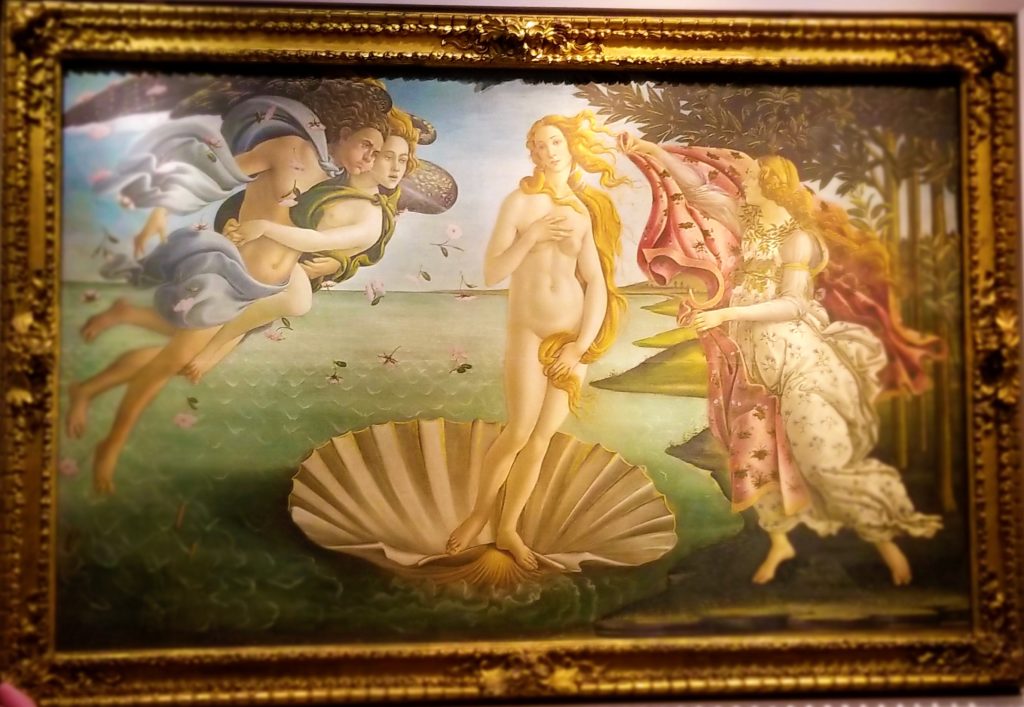
Some of the Masters that were highlighted included Botticelli, Michelangelo, Leonardo da Vinci, Filippo Lippi, Raphael, and Caravaggio. We also periodically would view some artists work of lesser significance to gain a perspective of how the major artists were influencing other artists of the time.
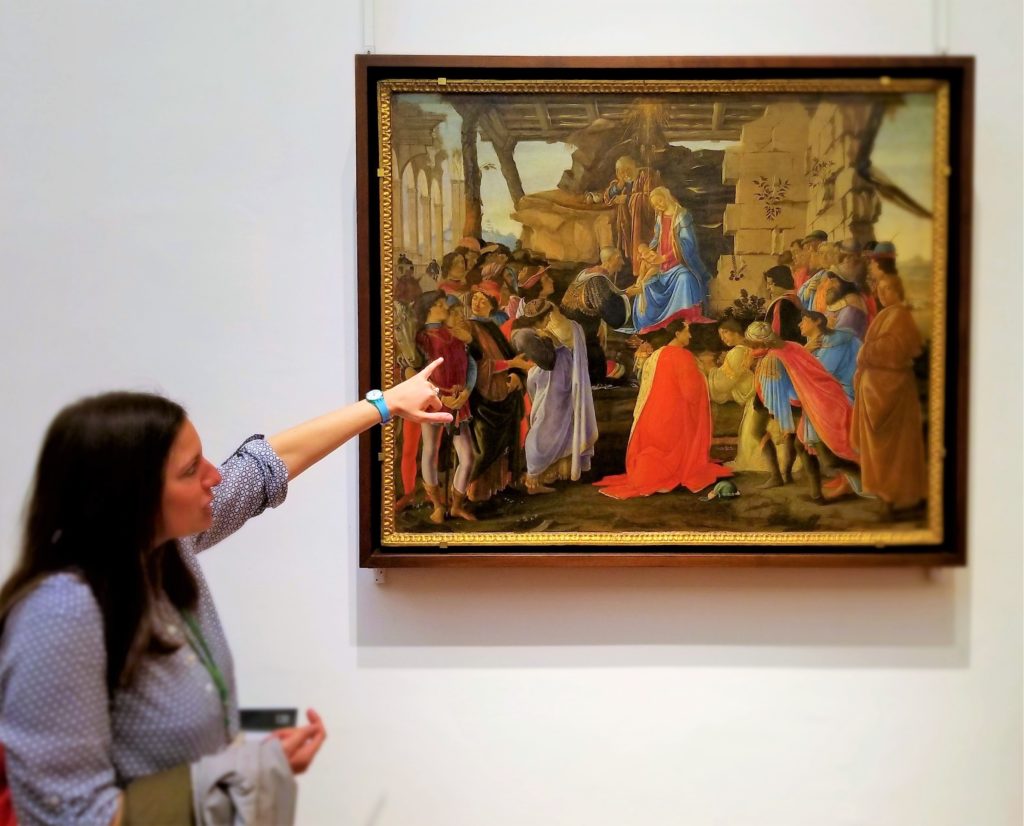
Caterina impressed us with her skill at moving the group from gallery to gallery. The Uffizi was very crowded, however it seemed as if every time we stopped, we were in a quiet place. We felt as if we had exclusive access to the art for viewing and taking pictures. This experience exemplified The Roman Guy motto of “Italy without the crowds.” We were pleased with how we were able to get so close to the masterpieces. Pictured above, Caterina explains how Botticelli inserted members of the Medici family and allegedly, himself into the painting. This practice of inserting influential individuals into paintings was common phenomenon.
Tribuna of the Uffizi
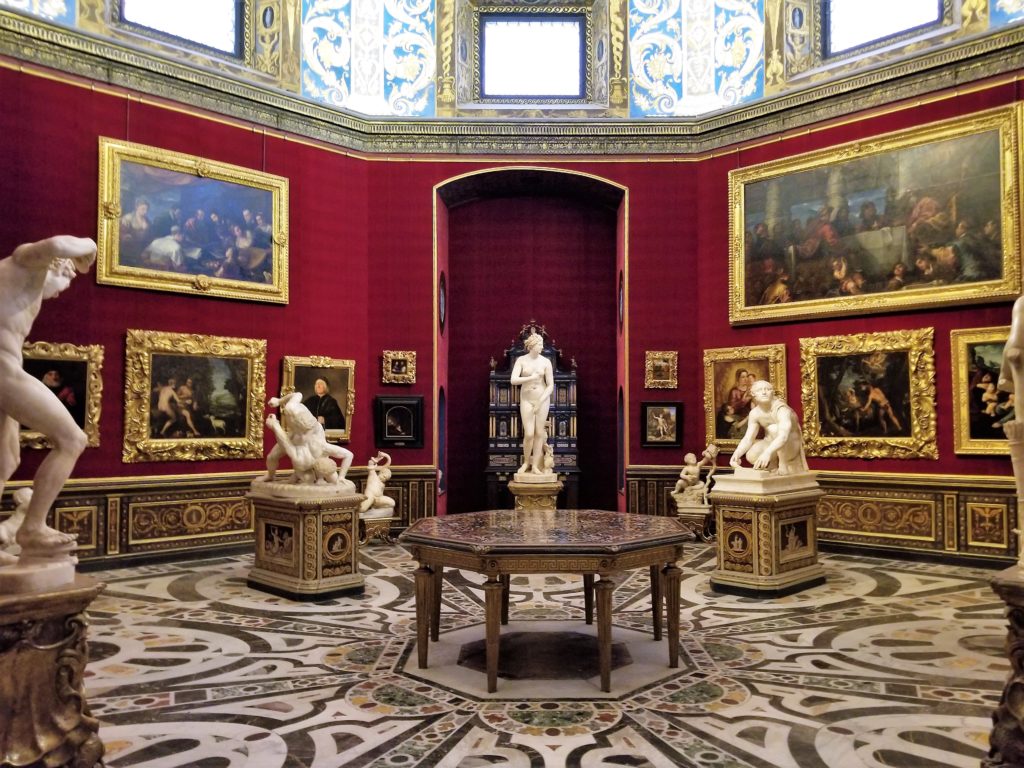
The Tribuna of the Uffizi was designed by Bernardo Buontalenti for Francesco I de’ Medici for Cosimo I de’ Medici in 1584. It’s purpose was to display the most valuable and important sculptures and paintings from the Medici collection. The room is octagonal and actually has three different entry viewing points.
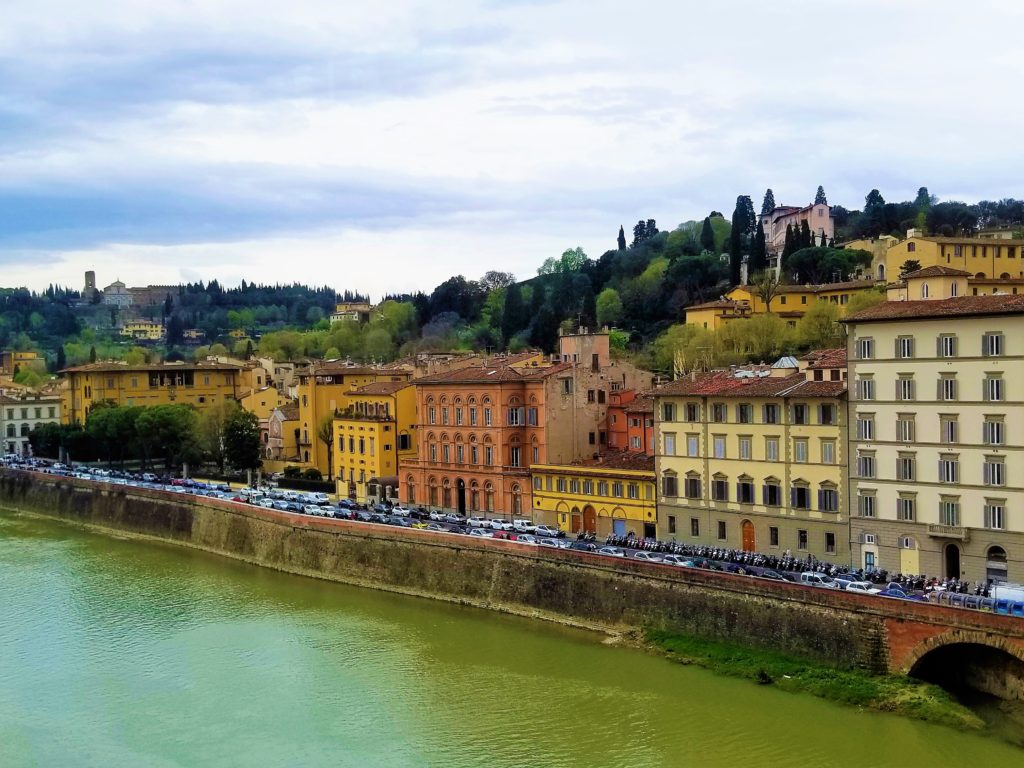 We were on the upper floor in a corridor that connected the two wings of the Uffizi. This corridor window looks out over the Arno River and surrounding hills offering sweeping views. We had never experienced a space like this in a museum before as most museums are closed without exterior windows. Caterina provided us plenty of time to take in art and these beautiful spaces while keeping us on schedule.
We were on the upper floor in a corridor that connected the two wings of the Uffizi. This corridor window looks out over the Arno River and surrounding hills offering sweeping views. We had never experienced a space like this in a museum before as most museums are closed without exterior windows. Caterina provided us plenty of time to take in art and these beautiful spaces while keeping us on schedule.
The Medici’s Secret Passage – Vasari Corridor
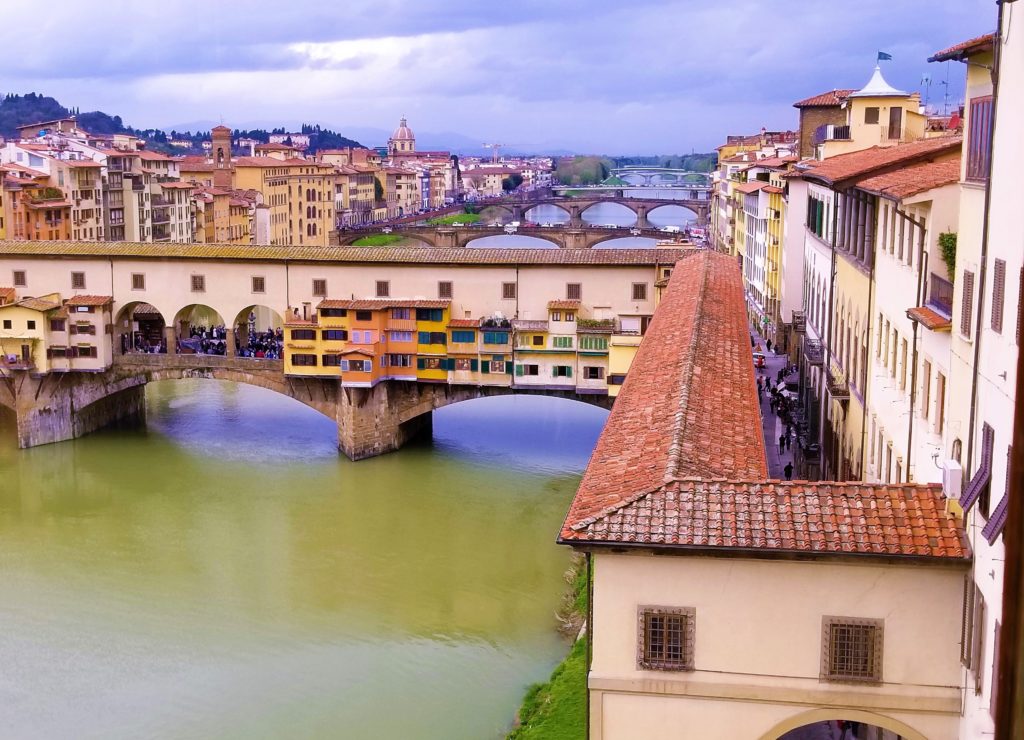 Looking out one of these windows offered a wonderful view of the Ponte Vecchio bridge. Caterina told us the story of the Ponte Vecchio and how in long ago it was filled with merchants selling meat and leather tanning goods. Understandably, the horrific smells these two trades brought with them was a problem. The offending merchants were forced out and jewelers brought in.
Looking out one of these windows offered a wonderful view of the Ponte Vecchio bridge. Caterina told us the story of the Ponte Vecchio and how in long ago it was filled with merchants selling meat and leather tanning goods. Understandably, the horrific smells these two trades brought with them was a problem. The offending merchants were forced out and jewelers brought in.
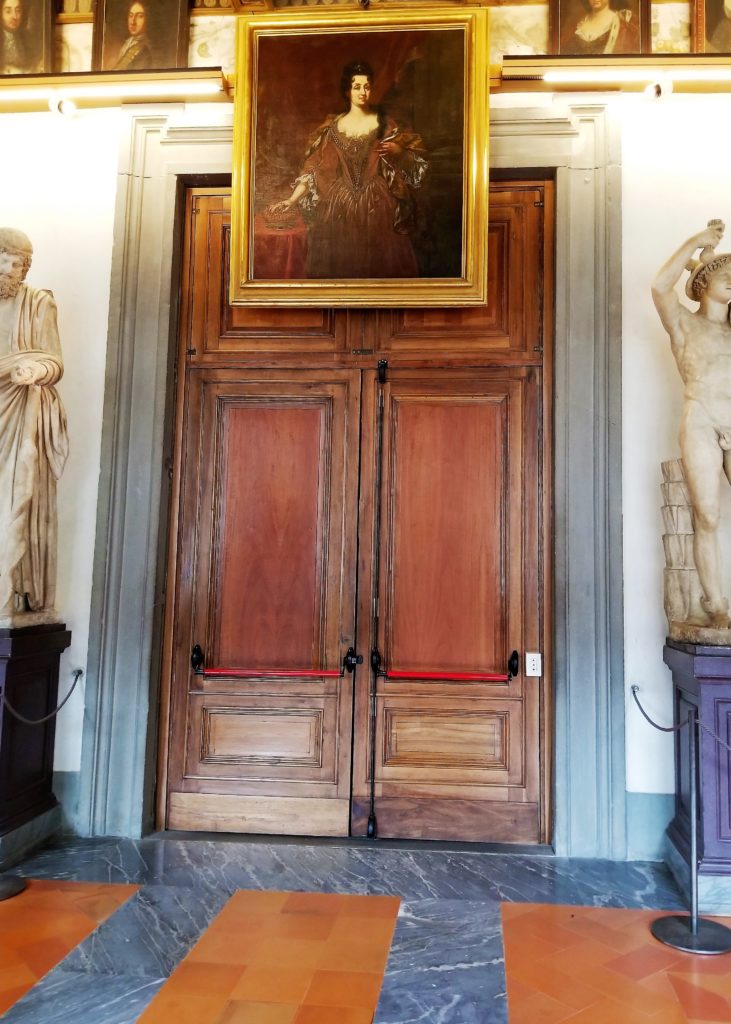 The Medicis’ were planning the wedding of their daughter and had palaces on both sides of the Arno River. Their wealth, and need to move safely from one palace to another inspired an idea. A secret passageway constructed across the Ponte Vecchio bridge connecting Pitti Palace and the Uffizi. The passageway, known as the Vasari Corridor begins in the Uffizi on the other side of the doors pictured above. The corridor was initially used for their daughter to move from the palace to the Uffizi for her wedding. Later the corridor was used by the Medici’s to avoid travelling on the dangerous surface roads.
The Medicis’ were planning the wedding of their daughter and had palaces on both sides of the Arno River. Their wealth, and need to move safely from one palace to another inspired an idea. A secret passageway constructed across the Ponte Vecchio bridge connecting Pitti Palace and the Uffizi. The passageway, known as the Vasari Corridor begins in the Uffizi on the other side of the doors pictured above. The corridor was initially used for their daughter to move from the palace to the Uffizi for her wedding. Later the corridor was used by the Medici’s to avoid travelling on the dangerous surface roads.
Doni Tondo by Michelangelo
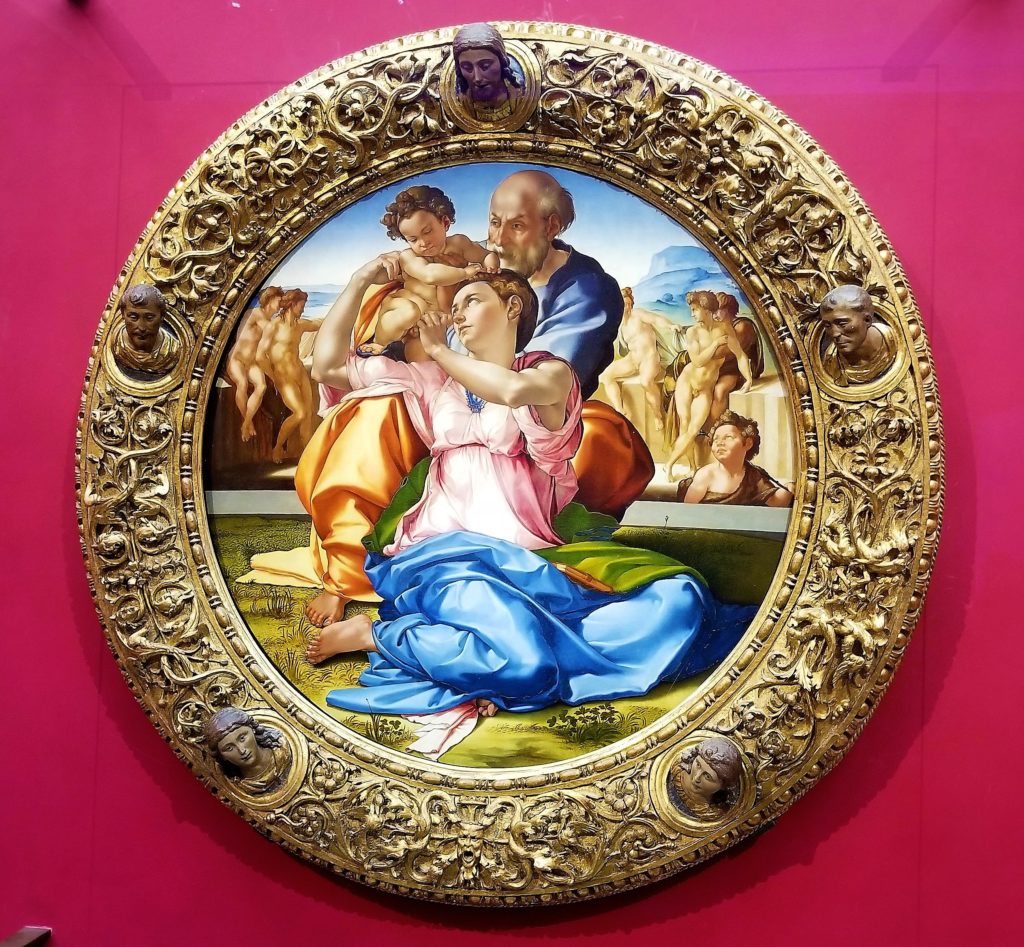
Italy Without the Crowds!
The Uffizi’s collection is vast and considered one of the finest in the world. We were stunned by our ability to get close to the masterpieces. Our Roman Guy guide navigated us into almost a private viewing of the Doni Tondo or Doni Madonna. This is the only surviving finished panel painting by Michelangelo.
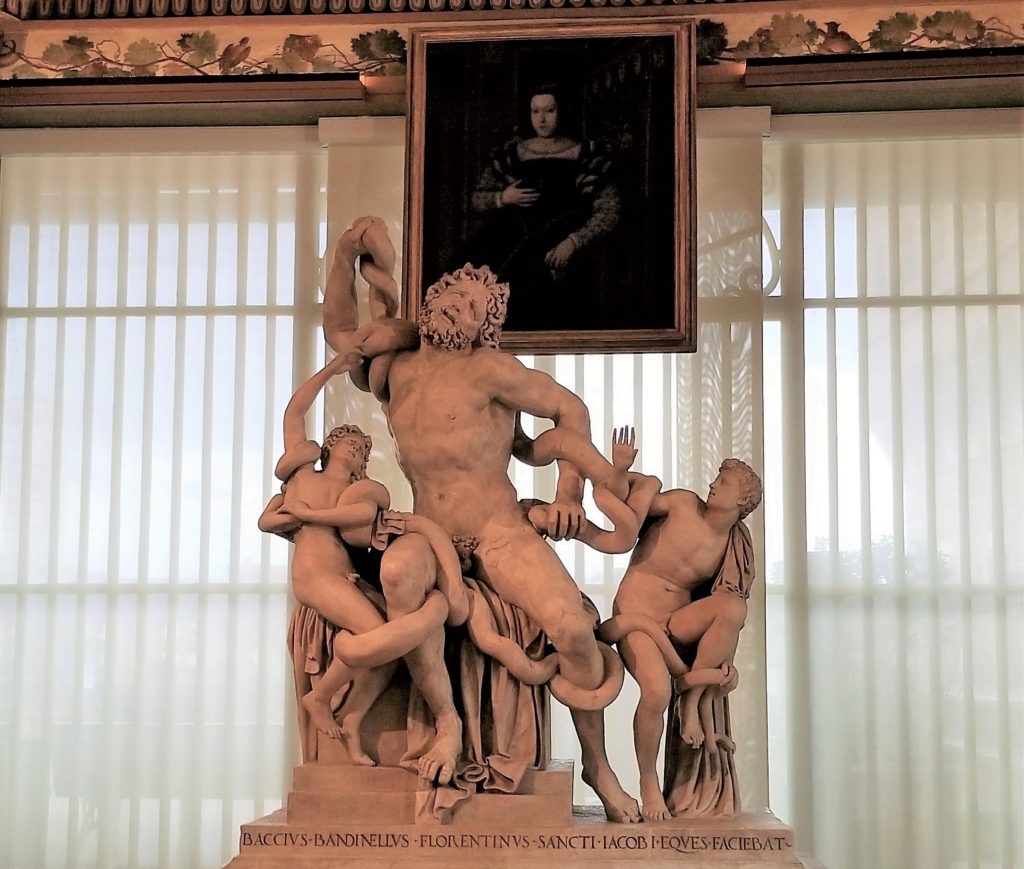
The Rooftop Terrace and the Duomo
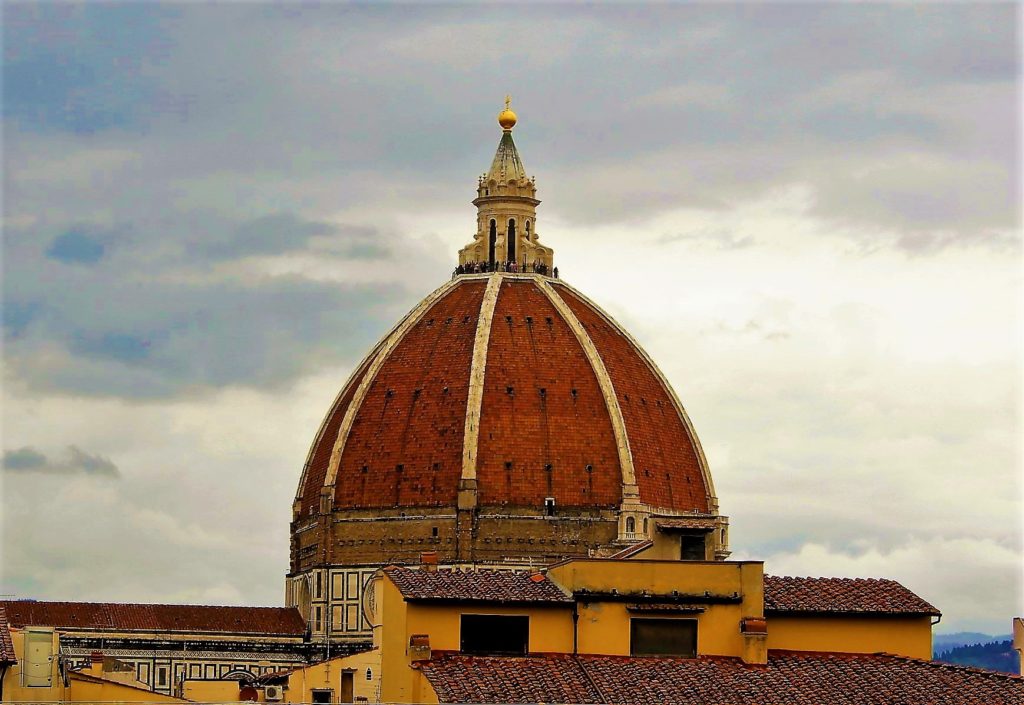 There is a cafeteria and patio on the second floor mid way into the tour. One other benefit to the rooftop patio is it affords a fantastic view of the Duomo.
There is a cafeteria and patio on the second floor mid way into the tour. One other benefit to the rooftop patio is it affords a fantastic view of the Duomo.
Perspective and Vanishing Points
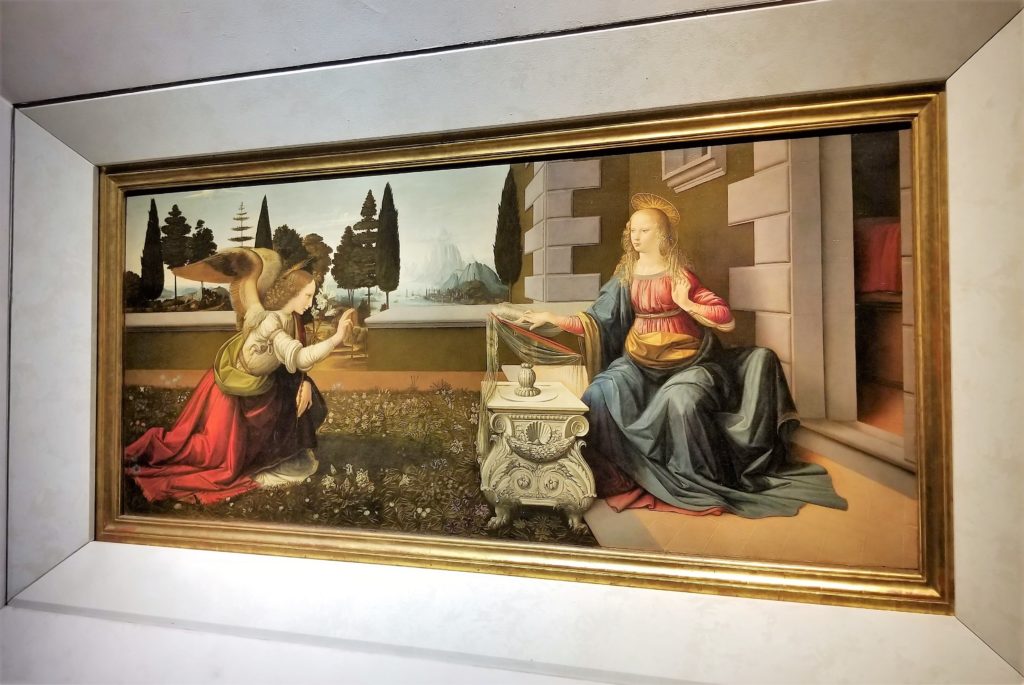
Da Vinci’s line drawings fascinated us. We enjoyed learning how artists used math to create perspective and the illusion of depth. The line drawings (pictured above) showing how the artist used the concept of a vanishing point in the painting. This felt like someone had pulled the curtain back and revealed da Vinci’s secrets to us.
Caravaggio and Baroque
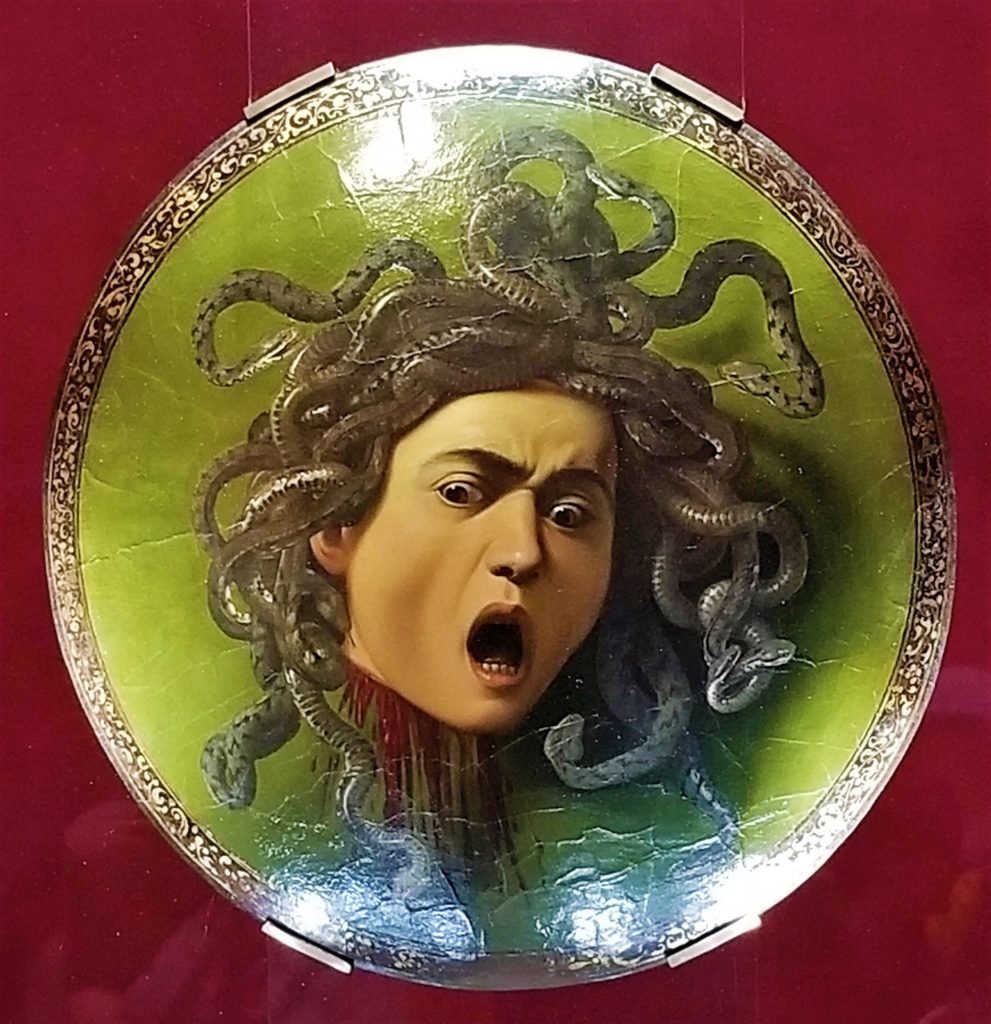
Wrapping up the tour we visited the Caravaggio gallery. Here we saw some significant works by Caravaggio such as the Medusa. The Caravaggio hall also has other works by the master, whose full name was Michelangelo Merisi da Caravaggio. He died tragically at 39 years old. Reports on the cause of Caravaggio’s death are unclear but vary between fever, murdered or lead poisoning. His painting inspired the Baroque. Below are two of his other masterpieces, the sacrifice of Isaac and Bacchus with his glass of wine.
Caterina explained the artistic influence the masters had on each other and other painters. Caravaggio inspirated Gerrit van Honthorstand’s golden-age scenes famous for their use of artificial light.
Church of Santa Croce
During our tour, Caterina mentioned that Michelangelo, Rossini, Machiavelli, and Galileo Galilei were all buried in the Church of Santa Croce. We found this interesting, so we visited the Church of Santa Croce (pictured below).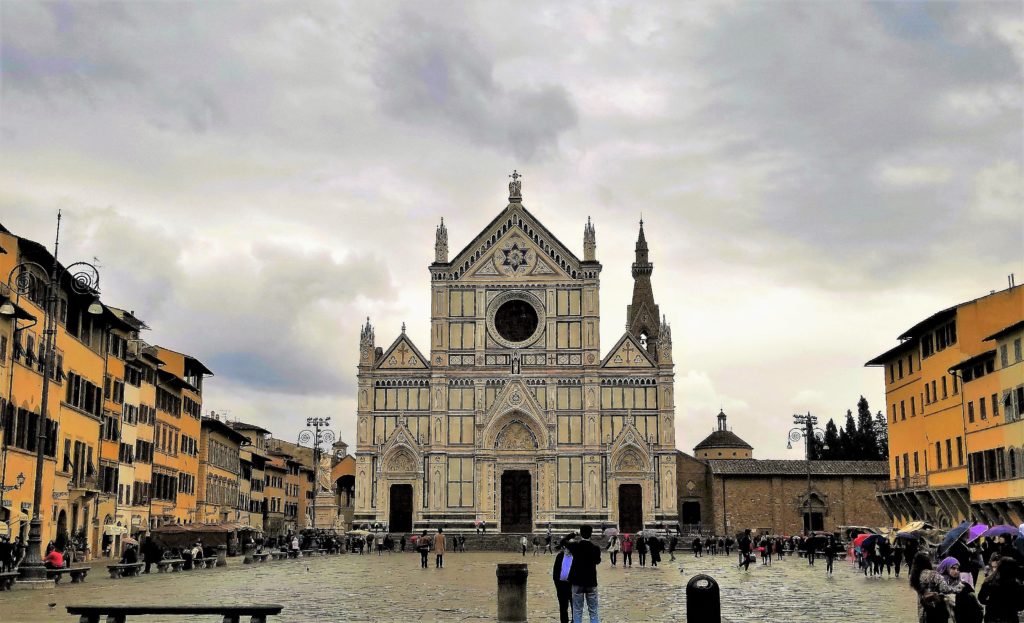
The other little tip we received from The Roman Guy was where to find the best gelato in Florence. Gelateria Edoardo, named for the son of the owners is rumored to have the best gelato in Florence and we agree. We already felt the Uffizi experience with Caterina from The Roman Guy was tremendous and that we’d seen the best of the Uffizi. We found the many little added extras, stories, and tips made not only our Uffizi visit memorable, but added to our overall Florence visit also.
Guided Tours Make a Better Experience
Comparing our earlier independent visit to the Uffizi with the guided tour with The Roman Guy, we are even more convinced of the value of The Roman Guy experience. We reached the end of our tour having seen the best of the Uffizi and with many vivid stories, memories and experiences from The Roman Guy tour that we will enjoy and share with family and friends long after we have left Florence. Thank you, Caterina, and The Roman Guy.
Read about our month living in Rome here.
CLICK HERE for The Roman Guy tour of the Uffizi
Like this? Share it on Pinterest. . .
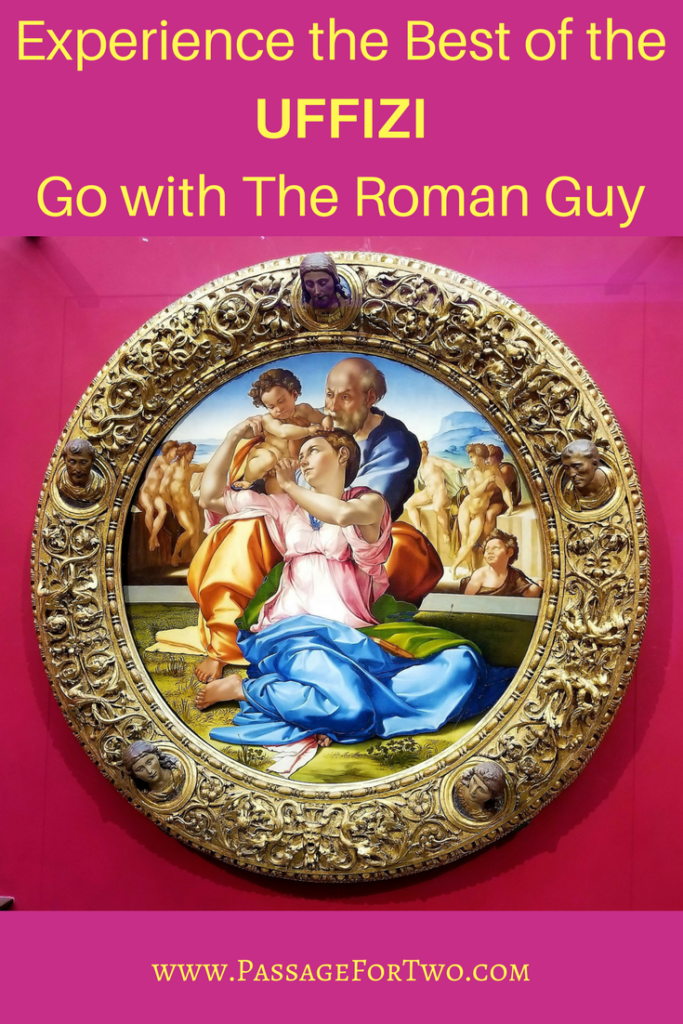
Disclaimer: We were paying customers of The Roman Guy for our two tours in Rome of the Colosseum and Vatican. We were guests of The Roman Guy for this third tour of the Uffizi. Our opinions, as always, are completely our own. We highly recommend this tour in Florence; in fact, we think it’s the best way to see the Uffizi.

